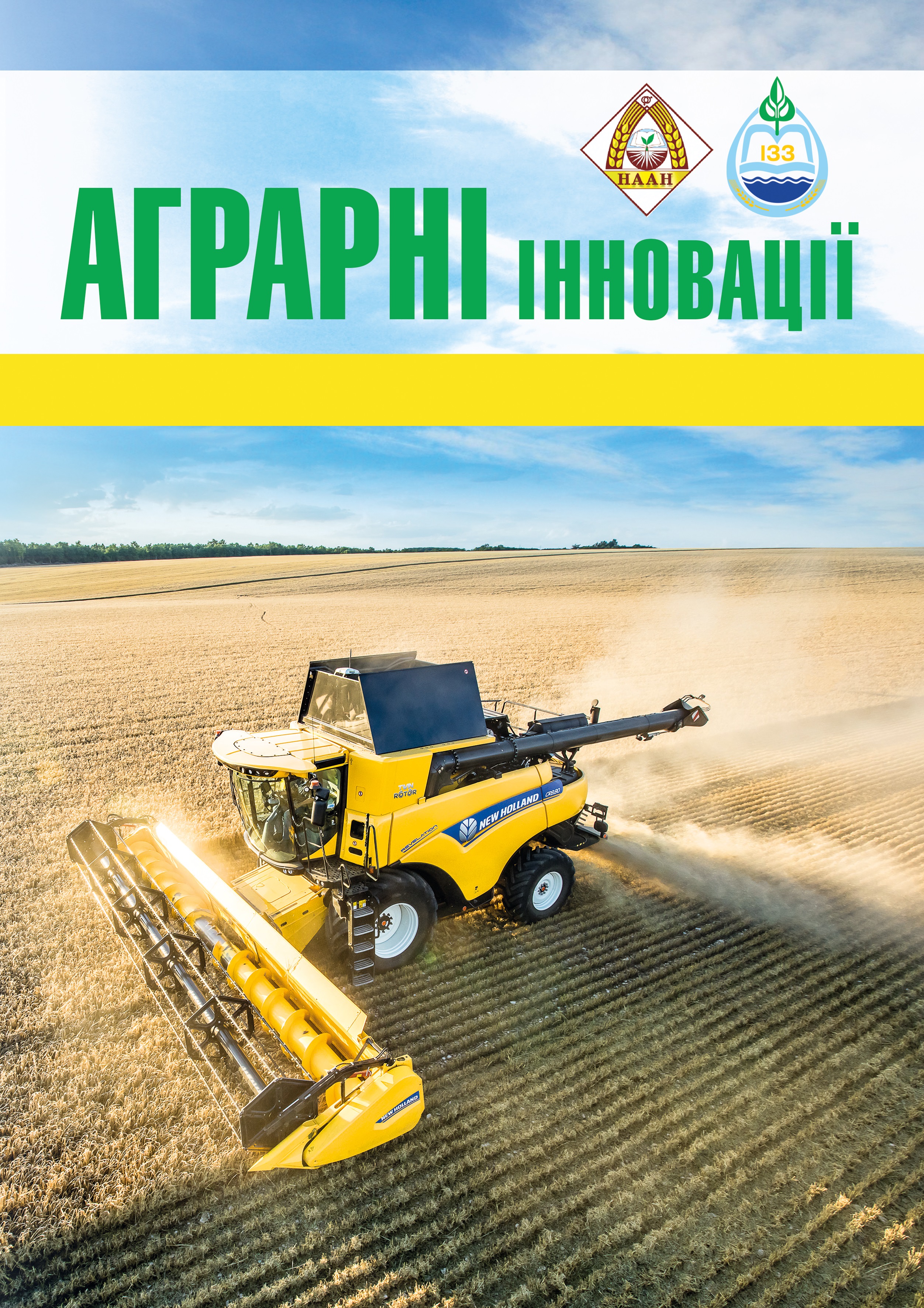INHERITANCE OF RESISTANCE TO PHYTOPATHOGENS BY HYBRIDS OF SOFT WINTER WHEAT IN THE CONDITIONS OF IRRIGATION OF THE SOUTH OF UKRAINE
Abstract
Purpose. To establish the nature of the manifestation of genetic control and features of inheritance of resistance to powdery mildew, brown rust, septoria in hybrids of soft winter wheat in order to create a resistant material for selection of varieties of intensive type. Methods. Hybridological analysis, field experiment using natural and artificial infectious background, statistical. Hybrids F1, F2, F3 were studied. The degree of damage to plants by powdery mildew and brown rust was assessed on scales: Cobb, Mainz-Dietz, Saari-Prescott. Results. In the process of selection and genetic research during 2008–2019, more than 350 hybrid populations with different genetic systems of resistance to brown rust, powdery mildew and septoria were studied. Varieties not only with dominant resistance, but also with semi-dominant resistance were involved in hybridization, which made it possible to create a genetic environment for wide formation. Using Western European ecotypes and breeding varieties of the Institute of Irrigated Agriculture as parental components, it was found that the inheritance of “resistance-susceptibility” to powdery mildew in most F2 hybrids was at an intermediate level for both parents. On the basis of “resistance-susceptibility” to septoria, F2 lines were more susceptible to the disease than both parents. It is established that in the conditions of irrigation on an artificial infectious background resistance to brown rust and powdery mildew can be inherited as a dominant, semi-dominant and recessiverait depending on its genetic control in the original parental forms. Conclusions. According to the results of the analysis of the structure of hybrid populations, mono- and digenic control of stability with variants of additive action, complementary and epistatic interaction of hereditary factors was revealed. Hybrid combinations with dominant monogenic control of stability, as well as with complementary and epistatic interactions of dominant genes have the greatest selection value.
References
2. Моргун В.В., Топчий Т.В. Пошук нових джерел стійкості пшениці озимої до основних збудників грибних хвороб. Физиология растений и генетика. 2016. Т. 48, № 5. С. 393-400.
3. Karelov A.V., Pirko Ya.V., Kozub N.A. et al. Identification of the allelic state of the Lr34 leaf rust resistance gene in soft winter wheat cultivars developed in Ukraine. Cytol. Genet. 2011. Vol. 45, No. 5. P. 271–276. DOI: 10.3103/S0095452711050069
4. Demydov O.A., Kyrylenko V.V., Humeniuk O.V., Blyzniuk, B.V., Melnyk S.I. Stages of eating the new high-yielding bread winter wheat variety ‘MIP Valensiia’. Plant Varieties Studying and Protection, 2018, 14 (1), 5–13. DOI: https://doi.org/10.21498/2518-1017.14.1.2018.126483
5. Kovalyshyna H.M., Dmytrenko Yu.M. Sources of resistance to brown rust pathogen and their use in the development of soft wheat varieties. Plant Varieties Studying and Protection. 2017. 13(4). 379–386. DOI: https://doi.org/10.21498/2518-1017.13.4.2017.117742.
6. Хоменко Л.О., Сандецька Н.В. Джерела комплексної стійкості пшениці озимої (Triticum aestivum L.) у селекції на адаптивність. Plant Varieties Studying and Protection. 2018. 14 (3). 270–276. DOI: https://doi.org/10.21498/2518-1017.14.3.2018.145289.
7. Орлюк А.П., Базалій Г.Г., Малярчук І.М. Структура гібридних популяцій озимої пшениці за стій-кістю до хвороб. Таврійський науковий вісник. Херсон. 1997. Вип. 4. 3-6.
8. Орлюк А.П., Базалій Г.Г., Біляєва І.М. Особ-ливості успадковування стійкості до фітопатогенів гібри-дами озимої пшениці при зрошенні. Зрошуване земле-робство. Херсон : Айлант, 2007. Вип. 47. С. 134–139.
9. Воронкова А.А., Пучков Ю.М. Селекция пшеницы на устойчивость к ржавчине. Краснодар, 1977. 55 с.
10. Драгавцев В.А. Методы генетического анализа неаллельных взаимодействий и их применение для анализа устойчивости растений. Генетические основы устойчивости растений к болезням. Ленинград : Колос, 1977. С. 167-174.
11. Методы селекции и оценки устойчивости пше-ницы и ячменя к болезням в странах – членах СЭВ. Прага, 1988. 321 с.






